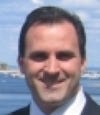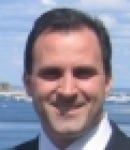New Kaseya Chief Marketing Officer: Time for Coopetition
On the job for about two months, Kaseya Chief Marketing Officer Robert Davis sure sounds familiar with the managed services market and the channel. How's that possible? Turns out Davis was a Kaseya co-founder who left the company in 2001 before returning in late 2010.

robert davis
On the job for about two months, Kaseya Chief Marketing Officer Robert Davis sure sounds familiar with the managed services market and the channel. How’s that possible? Turns out Davis was a Kaseya co-founder who left the company in 2001 before returning in late 2010. Also, Davis has extensive channel experience from his days at Novell and CA Technologies, where he ran CA’s $500 million storage business. Looking ahead, Davis says the managed services market is maturing… which means it’s time for more “coopetition” (cooperation and competition). Here’s the update.During a FastChat Video discussion on December 30, Davis described why he left Kaseya a decade ago, why he returned, and what he’ll focus on for 2011. The terms “community” and “coopetition” came up over and over again. Davis points to Kaseya’s closer working relationship with HTG Peer Groups. He says that’s a prime example of how Kaseya will interact far more closely with MSPs and VARs in 2011, with more examples to come.
Kaseya’s Early Days
But let’s go back to the beginning… the very beginning of Kaseya. Davis, a Novell veteran at the time, got to know Mark Sutherland and Paul Wong while working within the IT security market. The idea for Kaseya came up around 1999. Sutherland, Wong and Davis launched the company in 2000. But when the dot-com implosion hit and venture capitalsts went running for cover, Davis decided to head back to established IT companies while Sutherland (now Kaseya’s president) and Wong (now CTO) marched forward and self-funded Kaseya. By 2003 or so, Gerald Blackie joined Kaseya as CEO.
Recalls Davis:
“We had a term sheet on September 10, 2001 [with investors] but when September 11, 2001 arrived everything changed. I had family obligations. Mark and Paul, bless their hearts, took over the mantle of the company. The second-coming was Gerald in 2003. Those guys did an amazing job. They built a company that has no obligations to creditors and financers.”
Indeed, Kaseya is self-funded, and Blackie in early 2010 predicted the company would achieve roughly $100 million in annual revenues by 2010’s conclusion. Kaseya has also grown in scope. “We’ve got 33 offices and we’re north of 400 employees,” says Davis.
Challenges and Opportunities
Still, Kaseya has faced some key challenges. For the most part, the company was built upon a tiered licensing model that promoted some MSPs to buy more Kaseya licenses than they needed for the near-term. Over the past two years or so, some MSPs have pushed back against that tiered licensing model, preferring pay-as-y0u-go SaaS models, lower-tier purchases, or rival software offerings. Also in 2010, Kaseya launched the K2 managed services platform both on premise and in the cloud. The initial K2 launch faced some bumps because of its lofty hardware requirements. Plus, Kaseya tweaked and refined its SaaS efforts in 2010, leading to a slower roll out than MSPmentor had anticipated.
Predictably, Davis sounds upbeat. He points to the classic Novell era (early 1990s) and current Apple era as two companies that Kaseya hopes to emulate. Novell of the early 1990s and present-day Apple focus on thriving communities that depend on vendor innovation. Looking ahead, Kaseya has to make sure customers and partners have a “stronger emotional connection to community.”
Davis concedes that Kaseya has faced its share of channel conflict questions — especially since Kaseya sells its software into corporate IT departments. Looking ahead, he says Kaseya has to do a better job promoting channel opportunities into the enterprise environment. When it comes to direct vs. indirect, “it’s not an either-or discussion,” says Davis. “It’s a partnership. We have to show MSPs that they can profit by integrating with end-customers.”
Key Priorities
Among Davis’s key priorities for 2011:
1. Grow the community and ecosystem in a way that’s consistent with partner and customer needs. “We want to spend less time saying we don’t compete with you [VARs and MSPs] and more time rising the tide to lift all boats.”
2. Grow the Business. “We have to be diligent. And we’re distributed organization so we need to communicate. We need to say the same thing to customers in Korea and in New York City. But we need to be appropriate and localized to the maturity of each market.”
“The priority: Revenue. Grow and get beyond the sandbox you’ve been in. Community of users, partners and vendors.
Global View
Davis says Kaseya has roughly 13 web sites that integrate with a central database as well as Salesforce.com. With those systems in place, he expects Kaseya to scale globally while gaining momentum in areas like Latin America and Brazil.
Blackie has previously stated that Kaseya represents a billion-dollar revenue opportunity over the long haul. And Davis seems to be taking a similarly grand view of the opportunity ahead. Moreover, Davis notes that he previously ran CA’s storage business, which combined direct and indirect sales to generate roughly $500 million in annual revenues.
Competing, Cooperating and Growing
To grow revenues, Kaseya needs to truly embrace coopetition. Davis asserts:
“If you’re using another RMM platform there might be instances where we say it’s fine to keep using it. But we’ve got an enterprise IT platform, and we’re committed to integrating with the other tools. That’s what mature markets do: They compete and cooperate. It’s coopetition. Market growth means I need to learn to live with people [that is, rivals]. It doesn’t mean I have to put someone out of business [to succeed]. It’s a hige world and we have so many opportunities. The guys who don’t embrace the characteristics of a maturing market will not survive.”
The late Ray Noorda, formerly CEO of Novell, used to tell Davis and other Novell employees that there are three kinds of people:
Those who cause change. Their businesses grow
Those who react to change. Their businesses survive
Those who resist change. Their businesses die.
With those bullet points in mind, Davis says he hopes to help Kaseya and the managed services industry to “grow and get beyond the sandbox we’ve all been in. We’ll grow the community of users, partners and vendors working with us.”
Reality Check
Generally speaking, I think Kaseya ranks among the largest software companies in the managed services market, based on a payroll of 400-plus employees. But I also think Kaseya has been a company in transition over the past 18 months — trying to sort out new licensing models and delivery mechanisms involving SaaS and cloud.
We’ll continue to track Kaseya’s evolution. And I suspect we’ll get another healthy reality check during the Kaseya Connect user conference, scheduled for May 1-3 in Las Vegas.
Sign up for MSPmentor’s Weekly Enewsletter, Webcasts and Resource Center. Follow us via RSS, Facebook, Identi.ca and Twitter. Check out more MSP voices at www.MSPtweet.com. Read our editorial disclosure here.
About the Author(s)
You May Also Like


